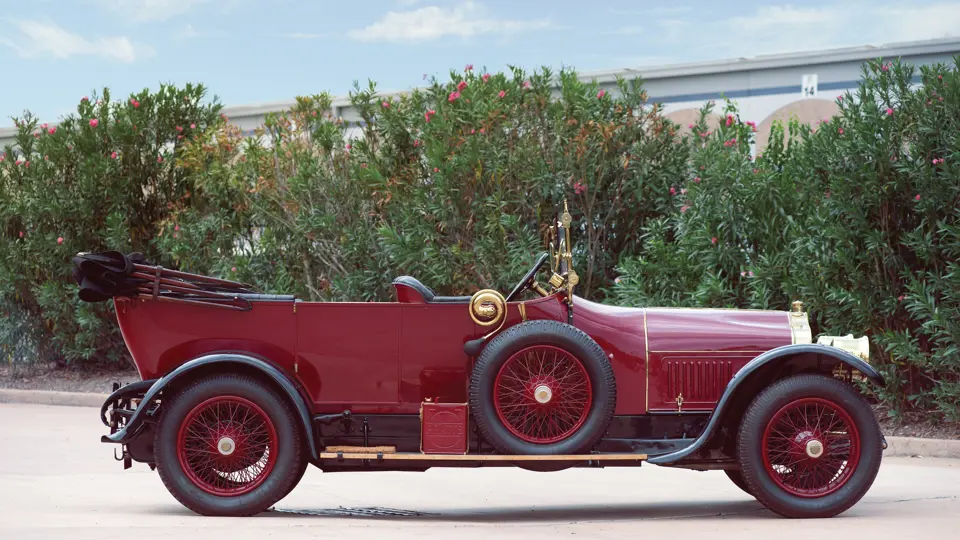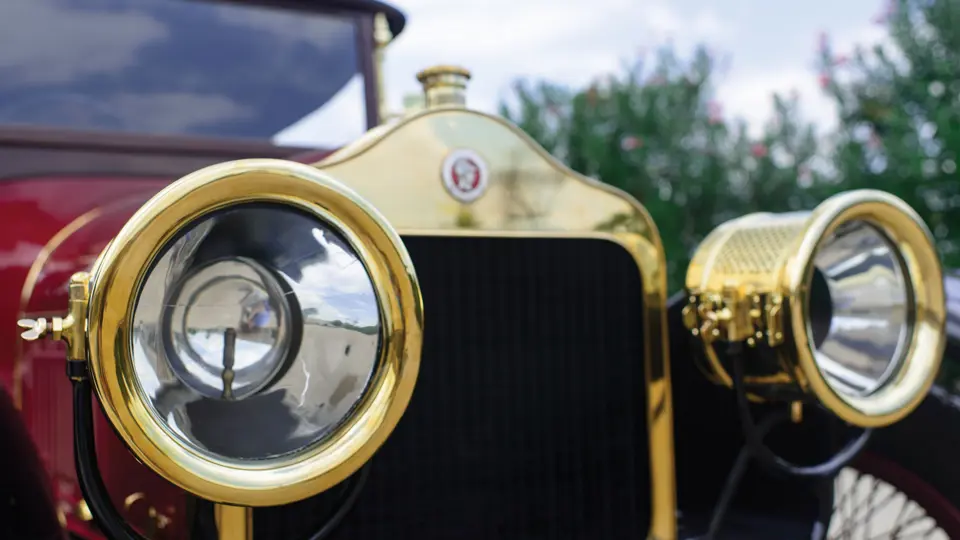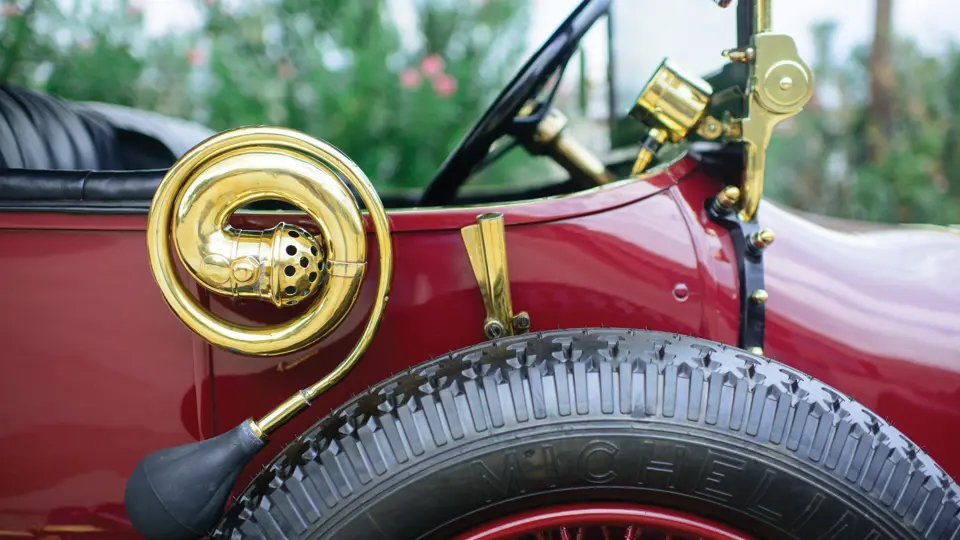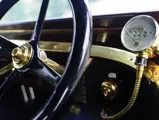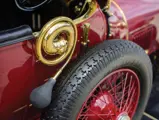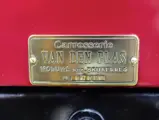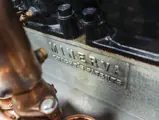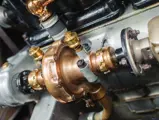26 bhp, 4,084 cc sleeve-valve four-cylinder engine, three-speed manual transmission, transverse leaf-spring suspension, and rear-wheel mechanical brakes. Wheelbase: 135.4 in.
Dutch-born Sylvain de Jong started out manufacturing bicycles in Antwerp, Belgium, and then he eventually progressed to automobiles in 1899, making him one of the first automakers in the country. While the company was impacted severely by World War I, it eventually found its niche in producing Belgium’s finest luxury car.
Models produced after 1910 were powered exclusively by the famous Knight sleeve-valve engine, which was named after the American inventor of the design, Charles Yale Knight. The opening and closing of the valves was accomplished by slotted sleeves, which moved up and down within the cylinder bore, and within this the piston reciprocated. When the ports in the two sleeves aligned with the exhaust port, the exhaust cycle was underway. Intake worked according to the same principle. The action of the sleeves moving up and down was caused by a fairly conventional camshaft, which was acting on roller bearings that were affixed to arms that were attached to the bottom of each sleeve.
This innovative design eliminated all the sources of mechanical noise at once, as the movement of well-lubricated sleeves up and down (with no sudden stops or starts) made no sound whatsoever. There were other benefits as well, such as leaving the entire cylinder head area available to optimize its shape and the position of the spark plug. The only downside to the sleeve-valve design was the oil consumption, particularly if the car was unused for a period of time. Fortunately, as the engine acquired mileage, carbon buildup on the inner and outer surfaces of the sleeves caused them to seal better as time went on, resulting in it consuming less oil, not more.
Knight’s marketing plan was clever in that rather than use his engine as the basis for building a complete car, he licensed the technology to the top automakers in each country: Daimler in England, Panhard et Levassor in France, Mercedes in Germany, and, of course, Minerva in Belgium, among others.
The 26-horsepower Type GG Torpedo offered here is one of very few Brass Era Minervas in the United States, and it is, of course, beautifully trimmed in brass throughout, including a Carello acetylene tank, brass Jones speedometer, and Pratts oil can, as well as the lovely radiator shell and other distinguishing hardware. The handsomely sporting bodywork was by Vanden Plas, which, as Minerva’s neighbor in Antwerp, became something of an unofficial favorite coachbuilder for the company. They outfitted numerous Minerva chassis over the years.
Offering fascinating technical design and beautiful details, this Minerva would be an interesting addition to any collection of brass beauties, or it would be an excellent acquisition for anyone who appreciates Charles Knight’s sophisticated brilliance.
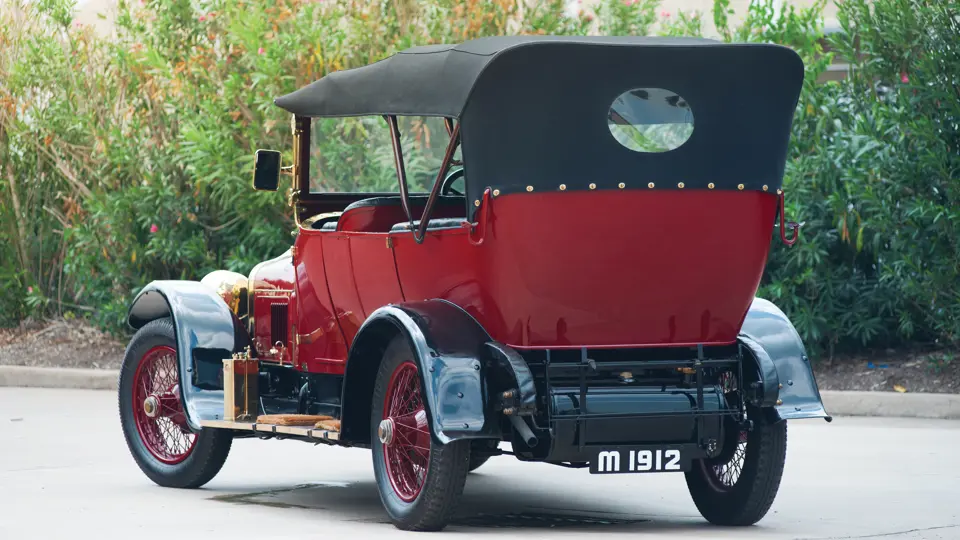
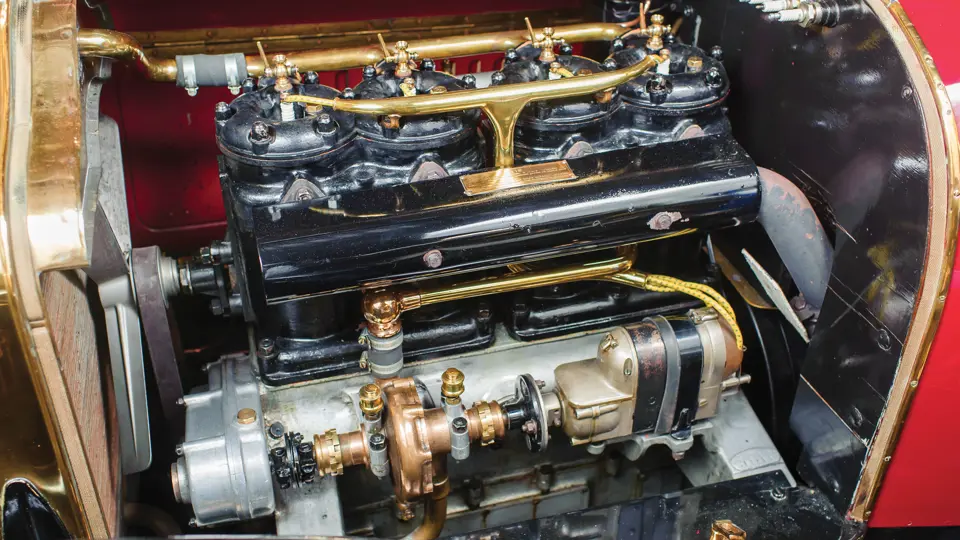
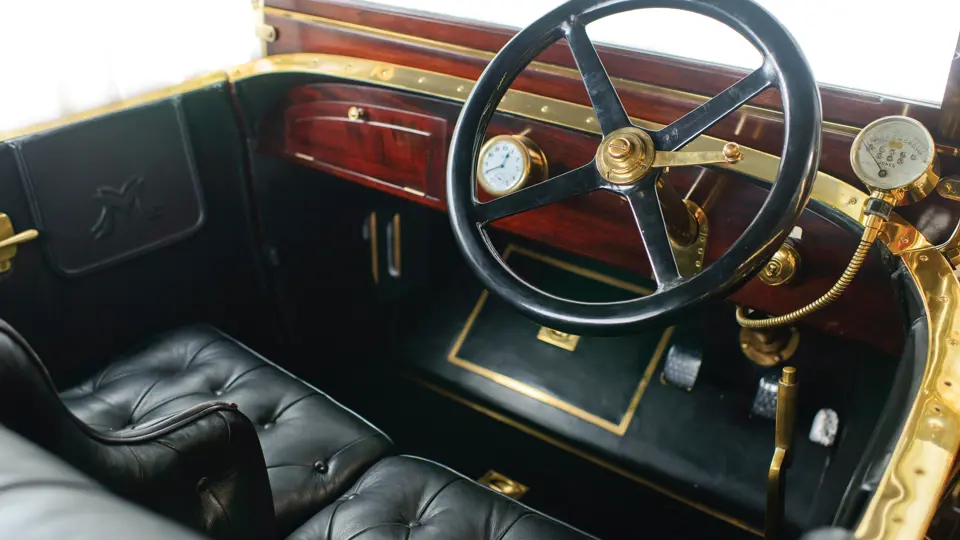


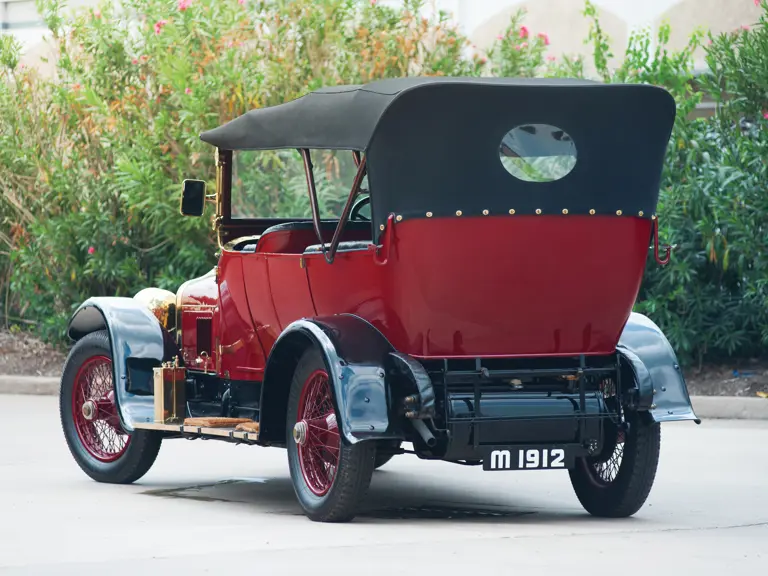
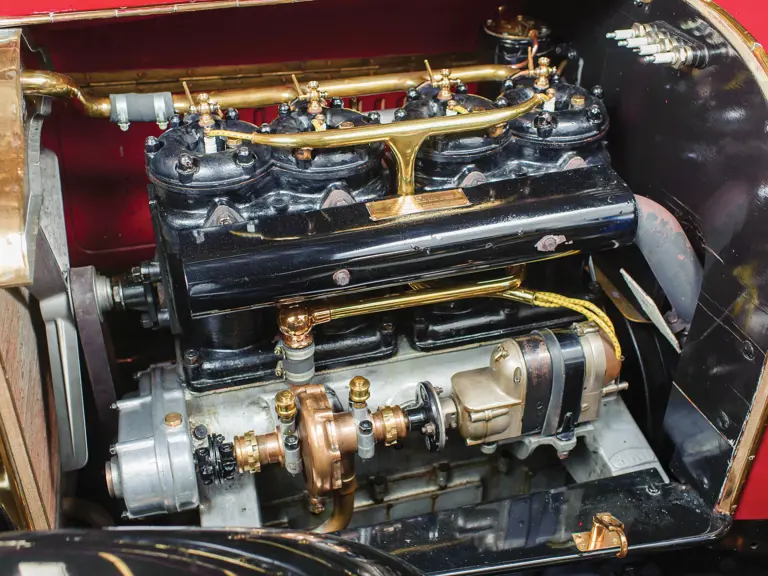
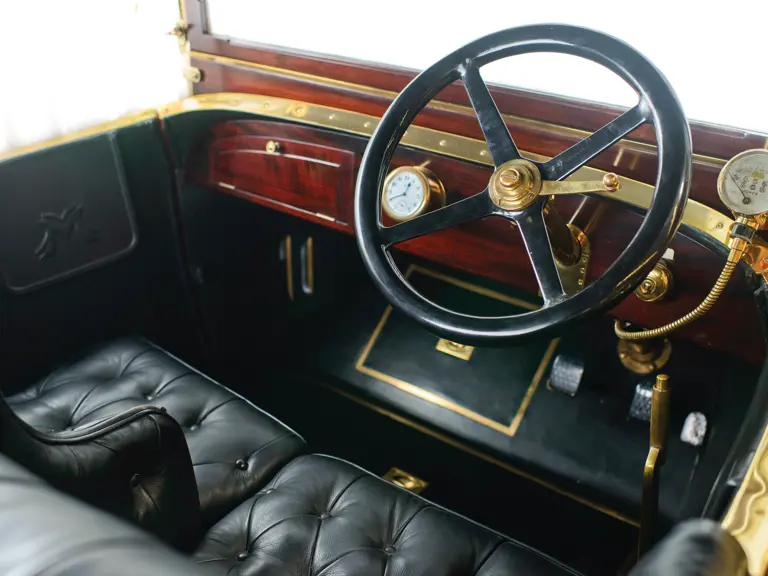
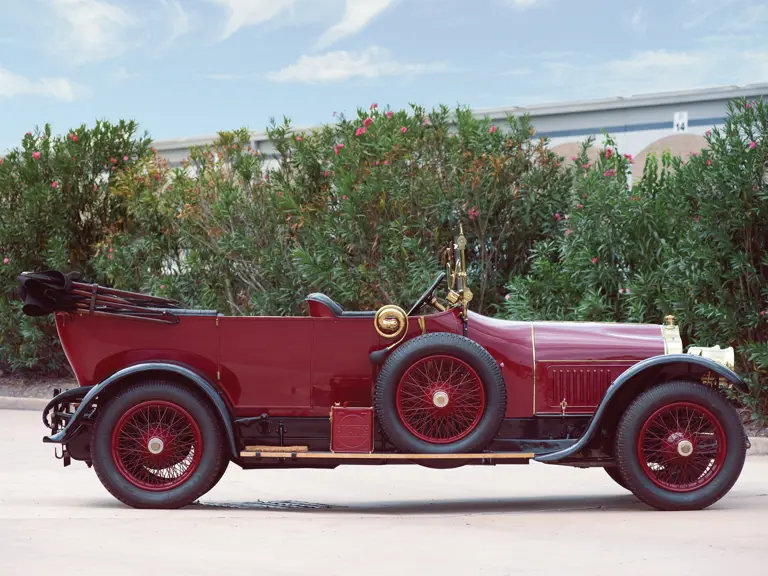
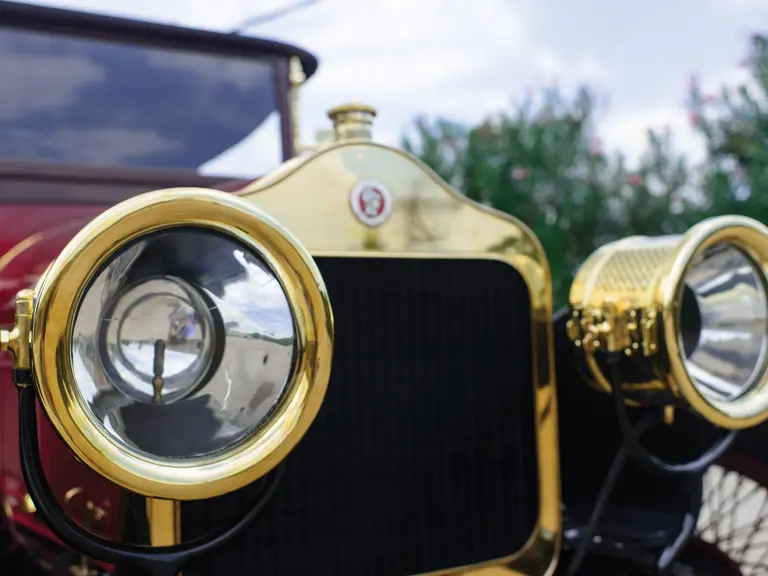




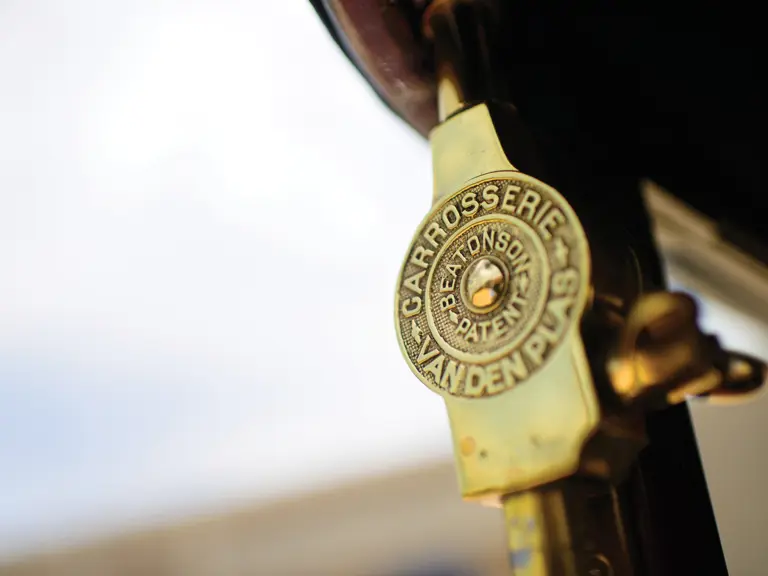

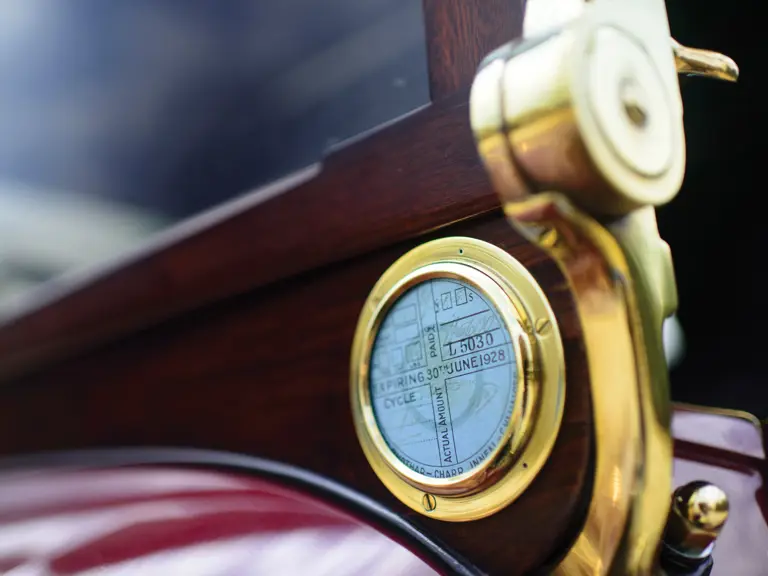


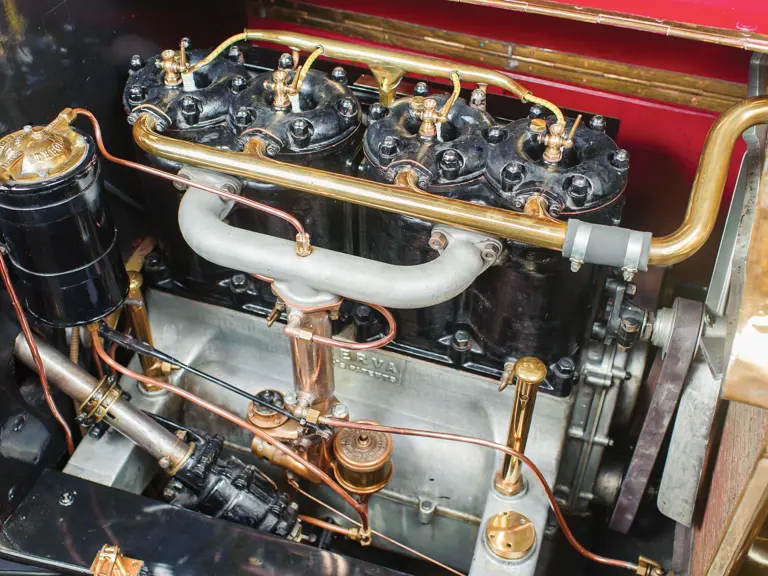
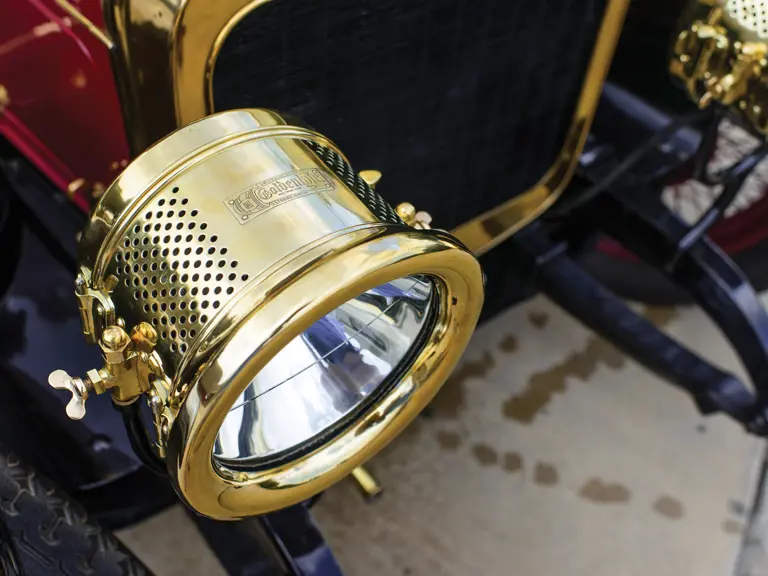

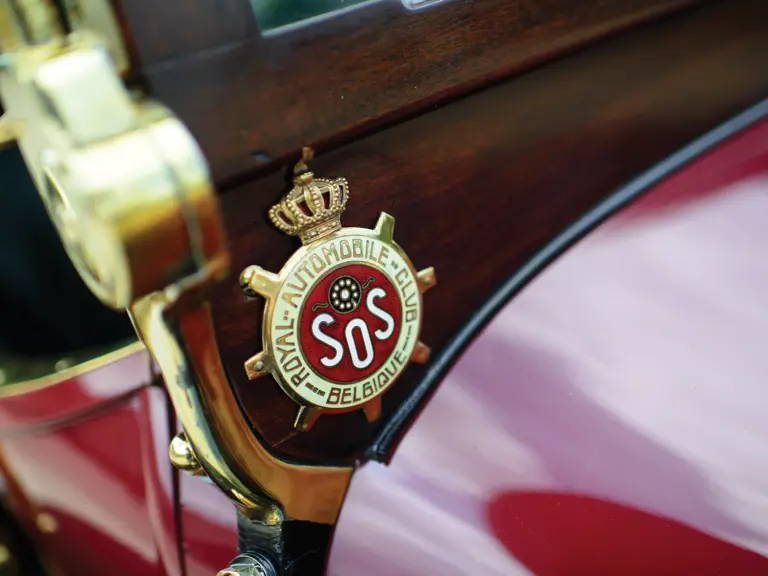
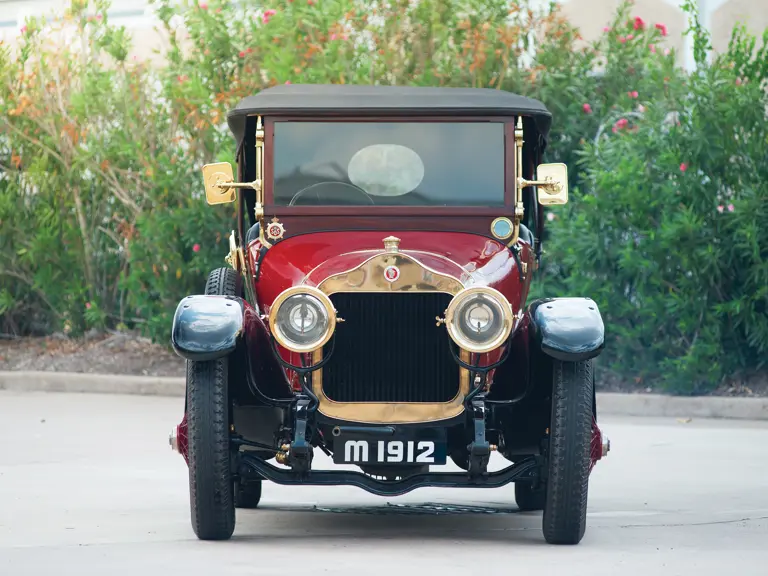
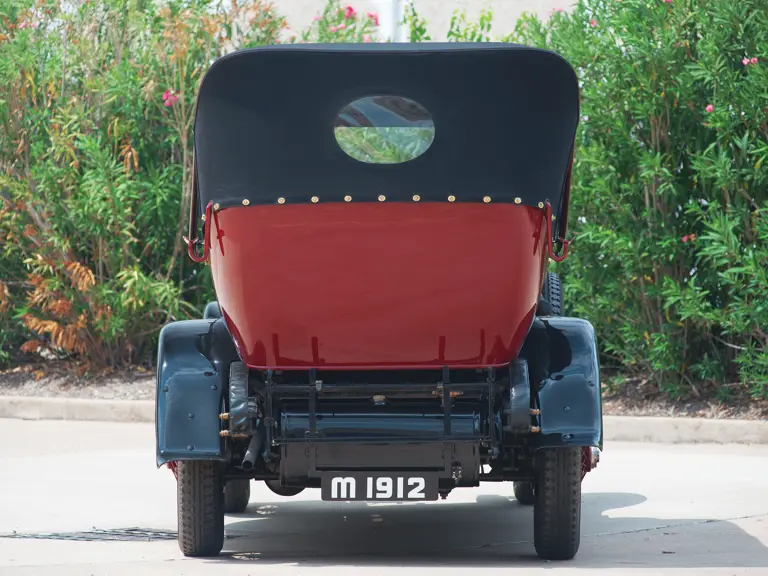

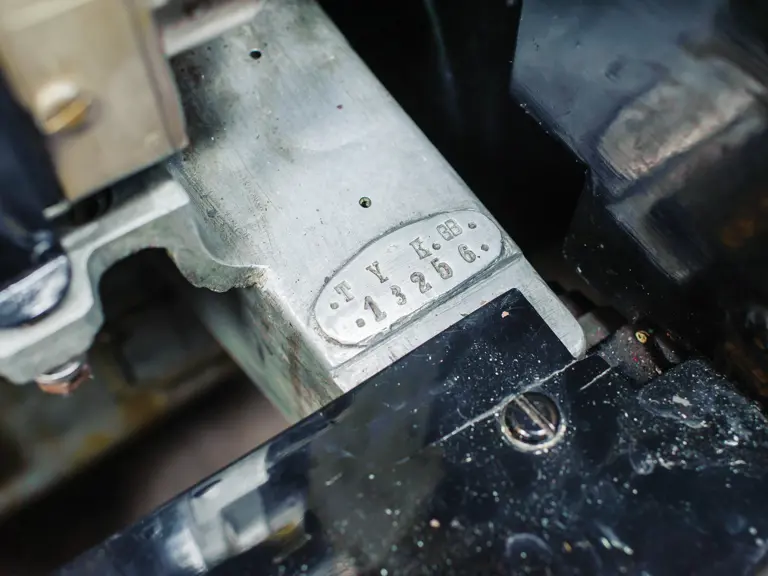

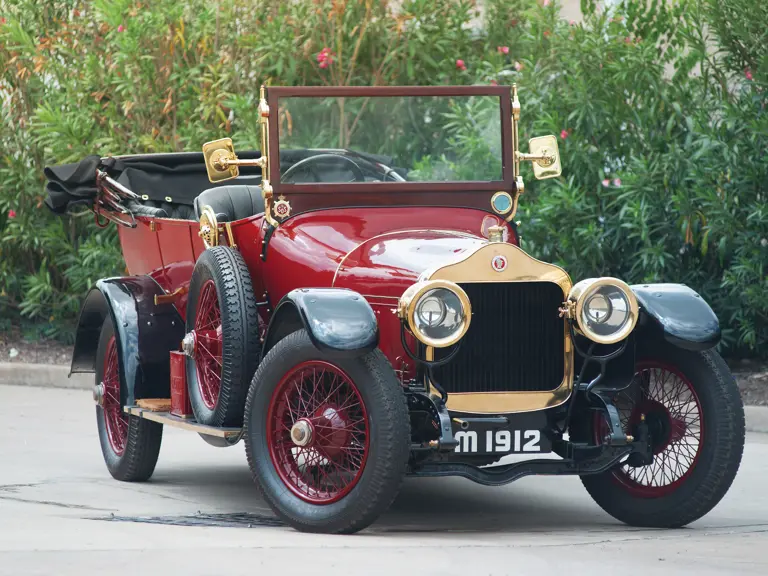
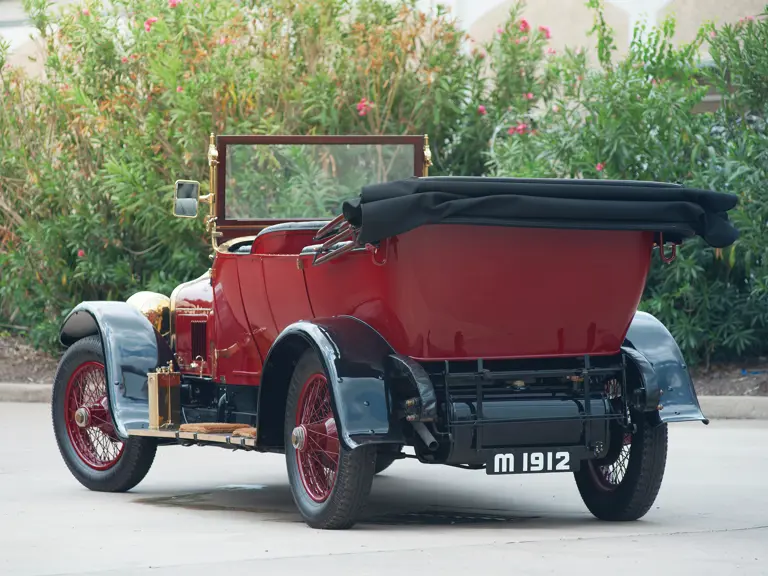
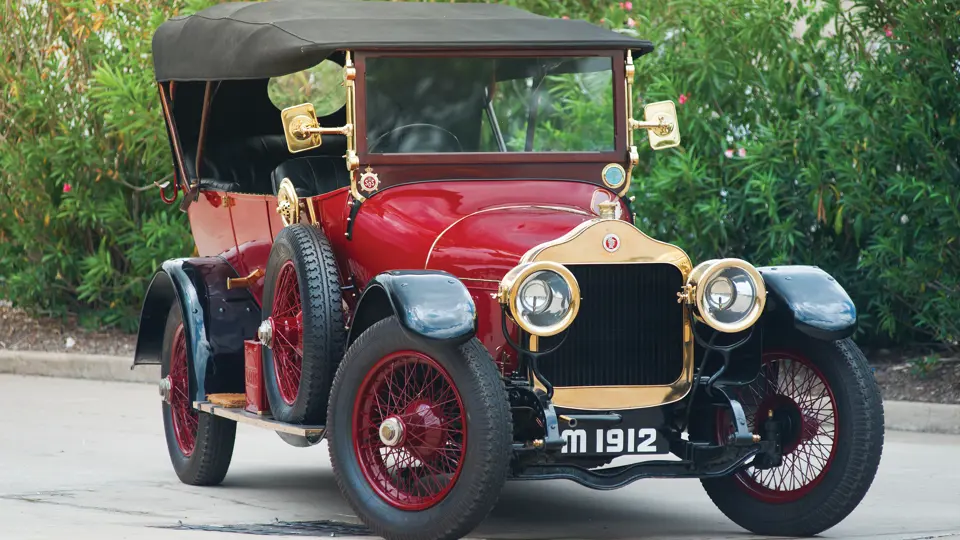
 | Hershey, Pennsylvania
| Hershey, Pennsylvania
